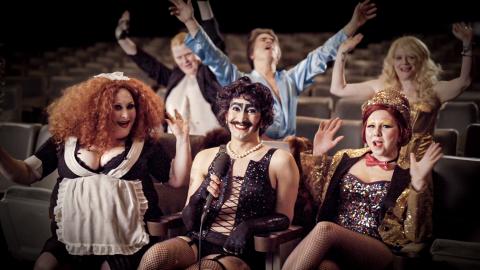Knights Templar in Popular Culture
The Knights Templar. The Order of Solomon's Temple. The Order Of Christ. The Poor Fellow Soldiers of Christ and of the Temple of Solomon. Pauperes Commilitones Christi Templique Salomonici Hierosolymitanis. Even just 'Templars'. You can call them what you like, but very few people out there will be able to tell you with any great certainty a huge amount about them. For the Knights Templar were, it's pretty safe to say, a fairly mysterious bunch...
Just who were they? You might not realise it but the Knights Templar pop up frequently in modern day culture - but just where exactly? Why is their image so powerful even today? And just why do we find this shadowy Catholic order of knights so fascinating?
Grab your sword. Let’s find out.
Who Were The Knights Templar?
Originally a small military troop of knights that were assembled to protect Christian pilgrims during their trips to The Holy Land, the Knights Templar quickly grew into an intimidatingly large army after wealthy benefactors backed them to continue and expand their work. The Templar were religious fanatics who took their calling extremely seriously indeed. Not only were they prepared to kill and die for their faith, they were also more than happy to take lifelong monastic vows of abject poverty, dedicated chastity and total obedience.
The Knights Templar were established way back in 1119 and remained a force to be reckoned with right up until the early 14th Century. They still exist in a more ceremonial and diplomatic capacity to this day, winding up their militaristic side some 700-odd years ago. While historians and experts are confident they know a good deal about the order, mystery is still very much synonymous with the Templars. And it seems that that’s just the way we like it.
These soldier monks weren’t just fighters. They were also given special guarding tasks in their time, including the job of keeping the Turin Shroud safe and - according to some - even guard the apocryphal/maybe not-so-apocryphal Holy Grail under lock and key.
The Knight Templars Get Around...
While the specifics of their origins, their shady remit or indeed any real rock-solid details may well elude your average Joe or Joanne, the image of the Templars is still quite a powerful one. For a relatively small band of 12th Century religious crusaders, their impact on popular culture is as significant as it is enduring.
You may not appreciate it immediately, but it doesn’t take too much head scratching before you’ll soon start to recall just some of the many times the Knight Templars have featured in a television programme, movie, video game, novel or even comic book that you’ve enjoyed. Not only that, but their legacy continues in a more oblique way as well, with a lot of ‘orders’ and military factions appearing across all pop culture mediums that are clearly influenced by or based directly on the Templars.
We’ve seen the distinctive chainmail and white surcoat adorned with its red cross in all sorts of places down the years, perhaps most notably in films such as Ironclad, Indiana Jones and the Last Crusade, Kingdom of Heaven and National Treasure. And in certain TV series’ like Carnivàle. There are plenty of major works of literature featuring the ancient order too, of course. Novels to make the Knights Templar pivotal to their plots include Dan Brown’s The Da Vinci Code, Sir Walter Scott’s Ivanhoe and Umberto Eco's Foucault’s Pendulum. To name but a few.
Even computer games get a look in with the undead ‘Templar Knights’ being one of the principle set of bad guys in the Tomb Raider video games. Let’s not forget the similarly popular action adventure Assassin’s Creed series (and subsequent movie starring Michael Fassbender) where, again, the Templar are portrayed as the scheming, plotting and Machiavellian villains of the piece.
Popular culture’s most famous Knights Templar however, go by another name. One you’re sure to recognise… Jedi.
That’s right, George Lucas firmly imagined his order of warrior space monks to be very much like the Templar. Both fanatically guard an ancient religion and have a huge fortune backing them up too. Oh, and both, weirdly enough, are nouns that are always plurals, even when you’re referring to the singular. Lucas even called them ‘Jedi-Templar’ in early versions of his Star Wars script.
It doesn’t stop there, though.
Popular culture’s most famous Knights Templar however, go by another name. One you’re sure to recognise… Jedi.
George RR Martin based the Night’s Watch in his wildly successful book series Game of Thrones on the Knights Templar. An order created to protect the Seven Kingdoms, they’re led by Lord Commander Jon Snow. Viewers of the TV adaptation might not immediately spot the inspiration, given the lack of physical similarity, but look deeper and the clues are there. Both are protectors of ancient truths, both reject allegiances to kings, both lay down down their lives in pursuit of their calling and both have their sins absolved when they dedicate their lives to the cause.
“It shall not end until my death. I shall take no wife, hold no lands, father no children. I shall wear no crowns and win no glory. I shall live and die at my post. I am the sword in the darkness. I am the watcher on the walls. I am the fire that burns against the cold, the light that brings the dawn, the horn that wakes the sleepers, the shield that guards the realms of men. I pledge my life and honor.”
Night’s Watch or Templar? Well, it’s Game of Thrones. But it could just as easily be taken from early writings about the Knights Templar...
Even when we don’t realise, the lore and tropes of the Knights Templar are right there in front of us.
Why Are We All Still So Fascinated By Them?
Let’s get the easy and obvious answer out of the way first, shall we? There’s no getting around it - a marauding army of unstoppable knights on a mission swashbuckling their way across the world like an olden days SAS is a pretty appealing concept, isn’t it?
There has to be more to it than that, though. Why are so many modern filmmakers, TV executives, writers, graphic artists and video game types still so taken with the Templar? Well, to our mind, it has to be that x factor that they have. That je ne sais quoi.
Surely much of it stems from the enigmatic air that the order has always had. Tales of confidential missions, rumours of conspiracy, whispers of evil deeds and an influence over some of the world’s most secret societies such as the Freemasons certainly help nurture and maintain that mysterious feel. Secrets are sexy and sex sells.
Add to the mix the fact that while religious fanatics and skilled fighters, the Knights Templar were also adept businessmen and bankers and you’re dealing with a rather odd - and rather enthralling - organisation. Monk accountants that could fight? It’s irresistible fare, really.
If you, like so many others out there, find yourself intrigued by the story of the Knights Templar (and why wouldn’t you be?), then The History Channel’s new historical drama series Knightfall is the show for you. Provided you like a little action thrown in with your history...
Watch Knightfall Tuesdays at 9pm
















